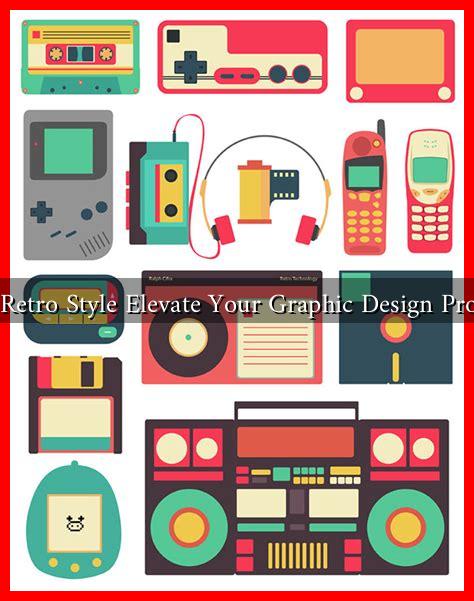-
Table of Contents
Can Retro Style Elevate Your Graphic Design Projects?
In the ever-evolving world of graphic design, trends come and go, but one style that has consistently captured the imagination of designers and audiences alike is retro. Retro design, characterized by its nostalgic elements and vintage aesthetics, can significantly elevate graphic design projects. This article explores how retro style can enhance your work, supported by examples, case studies, and statistics.
The Allure of Nostalgia
Nostalgia plays a powerful role in human emotions and decision-making. According to a study published in the journal *Psychological Science*, nostalgic feelings can increase feelings of social connectedness and enhance mood. This emotional connection can be leveraged in graphic design to create compelling visuals that resonate with audiences.
Key Elements of Retro Design
Retro design is not just about using old fonts or color palettes; it encompasses a range of elements that evoke a sense of the past. Here are some key components:
- Color Palettes: Retro designs often utilize muted colors, pastels, and earth tones reminiscent of the 60s, 70s, and 80s.
- Typography: Vintage fonts, such as serif typefaces and script fonts, can add a nostalgic touch to any project.
- Textures: Incorporating textures like grain, paper, or fabric can enhance the vintage feel.
- Illustrations: Hand-drawn illustrations or retro graphics can evoke a sense of authenticity and charm.
Case Studies: Successful Retro Design Projects
Several brands have successfully utilized retro design to enhance their identity and connect with consumers. Here are a few notable examples:
- Coca-Cola: The brand often revisits its classic logo and packaging designs, which evoke nostalgia and reinforce its long-standing heritage.
- Levi’s: The denim brand frequently incorporates retro styles in its advertising campaigns, appealing to both older generations and younger consumers who appreciate vintage aesthetics.
- Airbnb: The company’s “Airbnb Experiences” campaign featured retro-style graphics that highlighted local culture, making the offerings feel more authentic and inviting.
Statistics Supporting Retro Design
Research indicates that retro design can have a positive impact on consumer behavior:
- A survey by *The Journal of Consumer Research* found that products with nostalgic elements are perceived as more valuable and desirable.
- According to a report by *Nielsen*, 60% of consumers are more likely to purchase a product that evokes nostalgia.
How to Incorporate Retro Style in Your Projects
Integrating retro elements into your graphic design projects can be both fun and rewarding. Here are some tips to get started:
- Research Historical Trends: Understand the design trends of the era you want to emulate. Look at advertisements, packaging, and art from that time.
- Use Design Software: Tools like Adobe Illustrator and Photoshop offer features that can help you create retro effects, such as filters and textures.
- Experiment with Color: Don’t shy away from using bold, contrasting colors typical of retro designs.
- Seek Inspiration: Websites like Behance and Dribbble showcase a plethora of retro-inspired designs that can spark your creativity.
Conclusion
Incorporating retro style into your graphic design projects can elevate your work by tapping into the powerful emotions of nostalgia. By understanding the key elements of retro design, studying successful case studies, and utilizing statistics that support its effectiveness, designers can create compelling visuals that resonate with audiences. Whether you’re working on branding, advertising, or personal projects, embracing retro aesthetics can provide a unique edge in a crowded marketplace. So, why not take a step back in time and let retro style inspire your next graphic design project?
For more insights on graphic design trends, visit Smashing Magazine.

